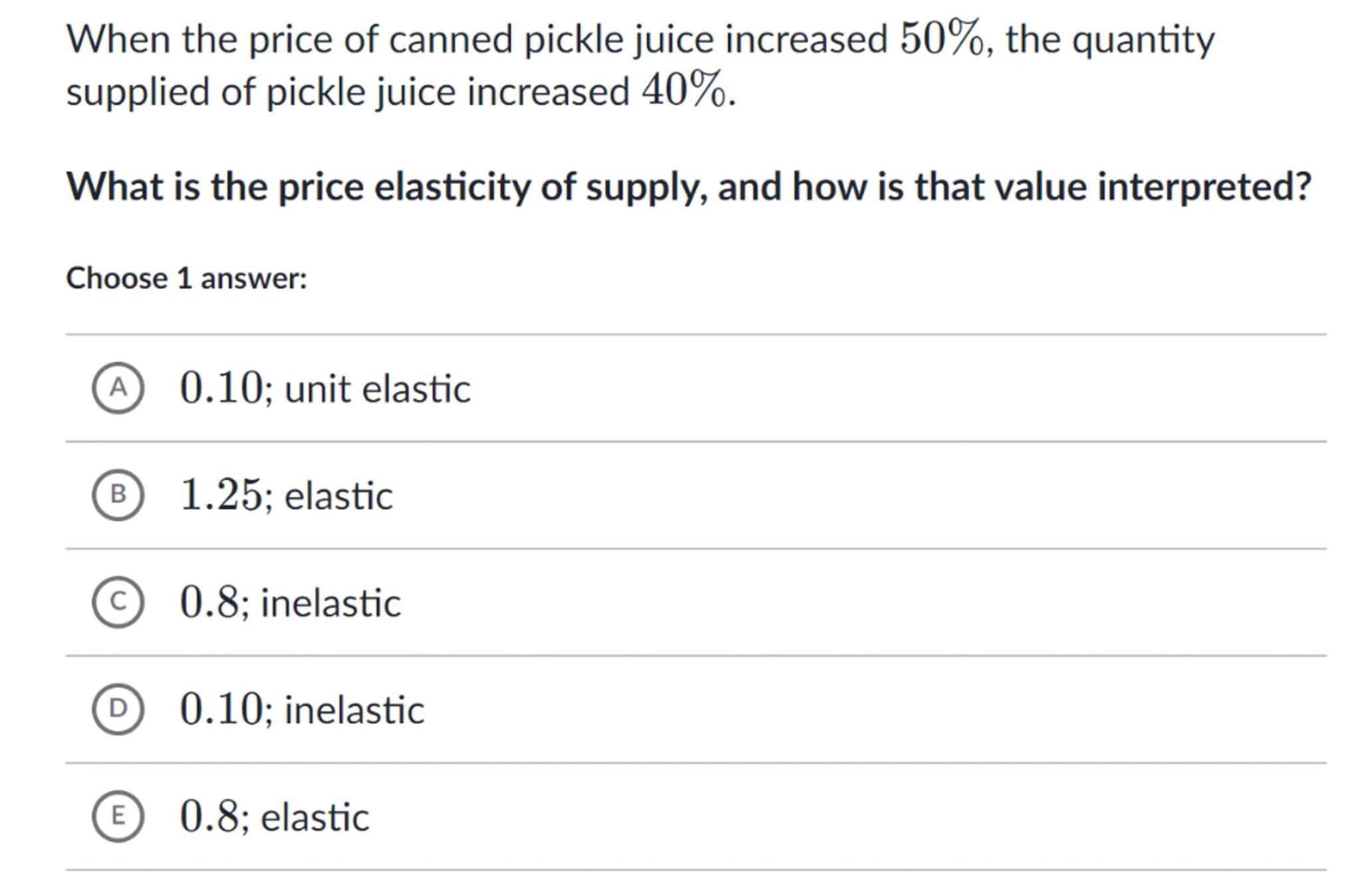
Sia

Question
Microeconomics
Posted over 1 year ago
When the price of canned pickle juice increased , the quantity supplied of pickle juice increased .
What is the price elasticity of supply, and how is that value interpreted?
Choose 1 answer:
(A) 0.10 ; unit elastic
(B) 1.25 ; elastic
(C) 0.8 ; inelastic
(D) 0.10 ; inelastic
(E) 0.8 ; elastic

Answer from Sia
Posted over 1 year ago
Solution
a
Definition of Price Elasticity of Supply: The price elasticity of supply (PES) measures the responsiveness of the quantity supplied of a good to a change in its price. It is calculated using the formula:
b
Calculation: Given that the price of canned pickle juice increased by 50% and the quantity supplied increased by 40%, we can substitute these values into the formula:
c
Interpretation: A PES value of 0.8 indicates that the supply of canned pickle juice is inelastic. This means that the quantity supplied is relatively unresponsive to price changes
Answer
(C) 0.8; inelastic
Key Concept
Price Elasticity of Supply (PES)
Explanation
The price elasticity of supply measures how much the quantity supplied of a good responds to changes in its price. In this case, a PES of 0.8 indicates inelastic supply, meaning the quantity supplied changes less than proportionally to the price change.
Not the question you are looking for? Ask here!
Enter question by text
Enter question by image
Unlock Smarter Learning with AskSia Super!
Join Super, our all-in-one AI solution that can greatly improve your learning efficiency.
30% higher accuracy than GPT-4o
Entire learning journey support
The most student-friendly features
Study Other Question